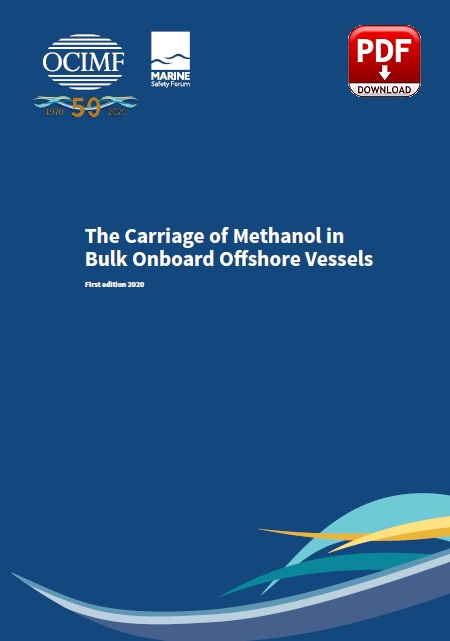The carriage of methanol in bulk is becoming common in the offshore oil and gas industry, and although there is technical documentation on methanol handling, guidance for offshore carriage by sea is limited. This best practice document provides a guide for the safe loading, carriage and discharge of methanol by offshore support vessels.
The supply of bulk methanol to offshore locations is the responsibility of several stakeholders, including the supplier, transporter and user of the product.
Methanol (Methyl Alcohol, CH3OH) is a wood alcohol used in oil and gas production to prevent hydrate formation, which often occurs in gas condensate fields. Injection of methanol into the well downhole zone of gas hydrate fields not only causes decomposition of gas hydrates in that downhole zone of the well but also improves downhole zone filtration characteristics.
Methanol is a hazardous chemical with significant toxic, flammable, and reactive properties that can adversely affect human health and the environment when not properly handled.
Methanol is highly flammable, burns with no visible flame in daylight conditions and is readily miscible in water. Special care should be exercised when loading and discharging this product, and instructions within a vessel’s procedures or marine operation manuals should be followed.
Safety is the biggest consideration when carrying methanol in bulk.
To achieve safe carriage, all bulk methanol cargo should be maintained in an inert condition
while onboard offshore support vessels. This should be in line with the IMO OSV Chemical Code which requires an oxygen content of 8% or less and clear areas around pressure/vacuum relief valves (P/V valves) and manifolds.
The assigned product tanks should be protected by cofferdams which should be inerted by
means of water or nitrogen.
Click on below image to download the complete Guidance document:
Source: OCIMF






